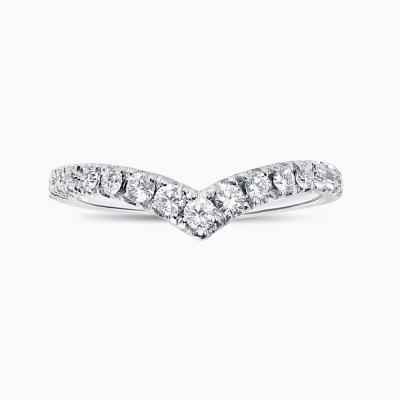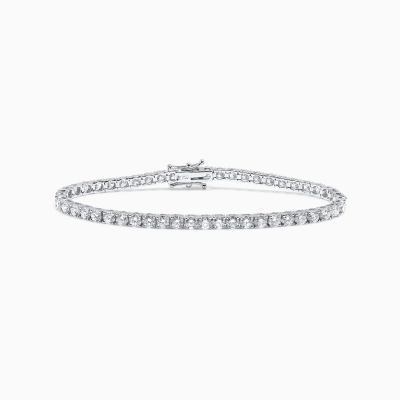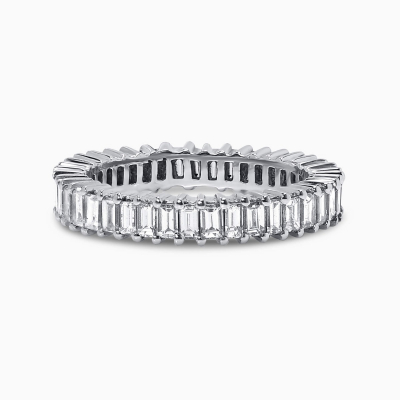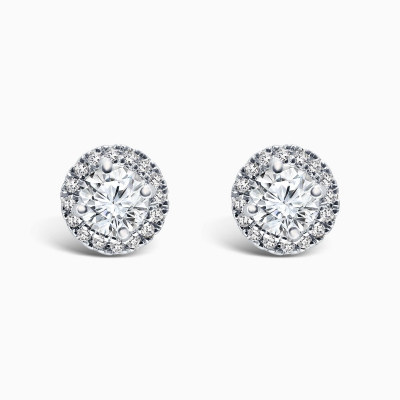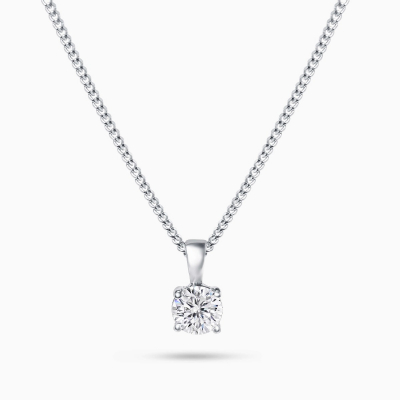USD
/
USD
/
Shipping to:
Currency:
HEARTS AND ARROWS
'Hearts and arrows' refers to the pattern that can be seen on a virtually perfect Round Brilliant diamond. It is quite remarkable. When you observe this diamond cut using a special viewer from the top, eight arrowheads are visible. If you look at the pattern from the bottom, hearts can be seen. This pattern was discovered in Japan in 1980 when assessing a diamond with perfect symmetry. It became highly sought after, and in the 1990s, its popularity moved to the US.
These diamonds are exceptionally rare. In fact, it is believed that less than one percent of Round Brilliant diamonds boast such incredible symmetry. Since this discovery, a special hearts and arrows viewer has been released onto the market to help decipher a diamond’s optical symmetry.
Hearts and Arrows diamonds are one of the most iconic within the jewelry industry and possibly the most well-known phenomenon that people associate with diamonds.
WHAT DOES THE TERM HEARTS AND ARROWS MEAN?
When assessing the 'cut grade' of diamonds, laboratories such as the GIA measure an average of the main facets on the crown and pavilion of the gemstone.
The term Hearts and Arrows comes from the pattern displayed on a perfectly cut fifty-seven faceted Round Brilliant diamond which displays perfect internal optical symmetry when viewed under a specially designed light-directing viewer called a 'Hearts and Arrows scope.' This viewer is a simple device that allows the analysis of the physical symmetry, contrast, and alignment of facets of a diamond. It does this by viewing the stone through both the top (crown) and the bottom (pavilion) by directing white and colored light at set angles to catch and reflect light back from specific facets and angles of the diamond.
When viewed from the face-up position, the diamond displays a beautifully perfect pattern of eight symmetrical arrowheads, and when viewed in the table-down position, it shows eight perfectly symmetrical hearts. In these diamonds, there is no difference in terms of the number of facets, which means that every facet is cut to the same angle, creating perfect optical symmetry.
WHEN WERE HEARTS AND ARROWS DIAMONDS DISCOVERED?
The Hearts and Arrows pattern was initially noticed by Japanese jewelers in the early 1980s when they discovered the existence of a kaleidoscopic effect of perfect symmetry when a round brilliant cut diamond was examined through a special viewer.
The actual term Hearts and Arrows was devised by Kinsaku Yamashita and trademarked in 1988 when the marketing campaign for Hearts and Arrows began. At this time, the perfect Hearts and Arrows patterning as seen today did not feature, but as Japanese jewelers refined their polishing techniques, the kaleidoscopic cutting style slowly gained popularity. The Hearts and Arrows phenomenon quickly spread from Japan to America in the early 1990s, and by this time, the technique and guidelines for cutting had already been laid out to a certain degree.
ARE HEARTS AND ARROWS DIAMONDS RARE?
These diamonds are exceptionally rare. It is believed that less than one percent of Round Brilliant diamonds are cut to the incredible optical symmetry of Hearts and Arrows. The main reason for this is the greater amount of rough diamond that is required to necessitate the additional polishing to create diamonds with this precise optical symmetry. Diamond polishers take up to three times longer to cut Heart and Arrow diamonds with up to 15% more wastage of the original diamond material than other cuts.
In addition, highly specialized tooling and quality cutting wheels are required, and in some cases, 100X magnifications plus careful analysis are required through every stage of production, all of which mean that diamonds cut in this way are far more expensive than average cut diamonds. This, in turn, means that Heart and Arrow diamonds are highly sought after by collectors, commanding very high prices.
DOES AN 'IDEAL' CUT RATING EQUATE TO HEARTS AND ARROWS?
The simple answer to this question is NO. Not all diamonds with an 'excellent' cut rating (GIA) will automatically qualify as Hearts and Arrows diamonds. From a technical viewpoint, the formation of a precise Heart and Arrows pattern is due to the extreme care that is required to be taken when polishing each facet to achieve the exact symmetrical angles and proportions. This level of precision is way above the criteria needed to achieve an 'excellent' symmetry rating.
A common misconception is that a diamond that is known as a 'Triple Excellent', which means it has an excellent cut, excellent polish, and excellent symmetry, will also display a Hearts and Arrows pattern. Sadly, this is not the case because the cut grade is based on an average of the main angles, and the position of the facets can vary quite significantly.
When looking through a viewer, one can easily see the differences in the optical performance of a diamond which is perfectly cut with Hearts and Arrows versus an excellent cut without Hearts and Arrows. Notably, a Hearts and Arrows diamond will have a higher light refraction and therefore display far more sparkle which is evenly distributed across the diamond when compared to an excellent cut diamond without the Hearts and Arrows patterning. It will also have a better contrast pattern.
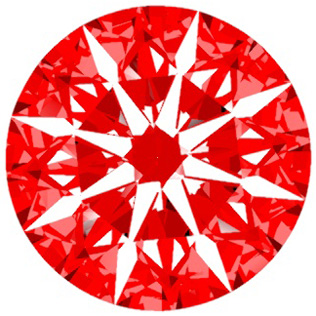
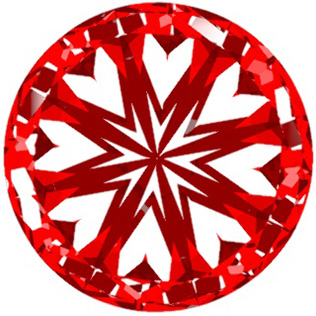
HOW CAN I BE SURE THAT I AM BUYING A HEARTS AND ARROWS DIAMOND?
The Hearts and Arrows pattern is very popular perhaps due to its obvious symbolic association with Cupid even though the heart pattern is invisible once the diamond is set. Very often the presence of the Hearts and Arrows pattern is taken as confirmation that the diamond is well cut but this is not necessarily true.
Consumers can be misled regarding the quality of a Hearts and Arrows pattern as while a diamond may display what appears to be a pronounced hearts and Arrows effect, several subtle details in the positioning, spacing, and shape of the pattern can have a significant impact on desirability and therefore value. These variations are often not detectable by any except experienced graders or jewelers.
Some diamond manufacturers cut to a specification that will yield this particular pattern, even at the expense of overall cut quality. A true Hearts and Arrows diamond really is the cream of the crop and therefore will command a premium price. Some jewelers may offer sub-standard stones which are well cut but have simply not undergone the pinnacle of precision cutting required for the diamond to be classified as Hearts and Arrows. Therefore always ensure that the Hearts and Arrow diamond that you select is fully authenticated. Be sure to request all the necessary certification such as ASET, Idealscope, Hearts and Arrows images from your jeweler.
It should be noted that the GIA does not recognize the Hearts and Arrows pattern as a component of cut grade. This is partly due to the fact that the presence of the pattern is not a guarantee of the cut. Occasionally you will see a Hearts and Arrows notation on a GIA certificate but this is simply the GIA noting that a Hearts and Arrows inscription is present on the girdle of the diamond. This is provided as information only, not to be taken as a confirmation of the presence or quality of any Hearts and Arrows pattern in the diamond itself.







